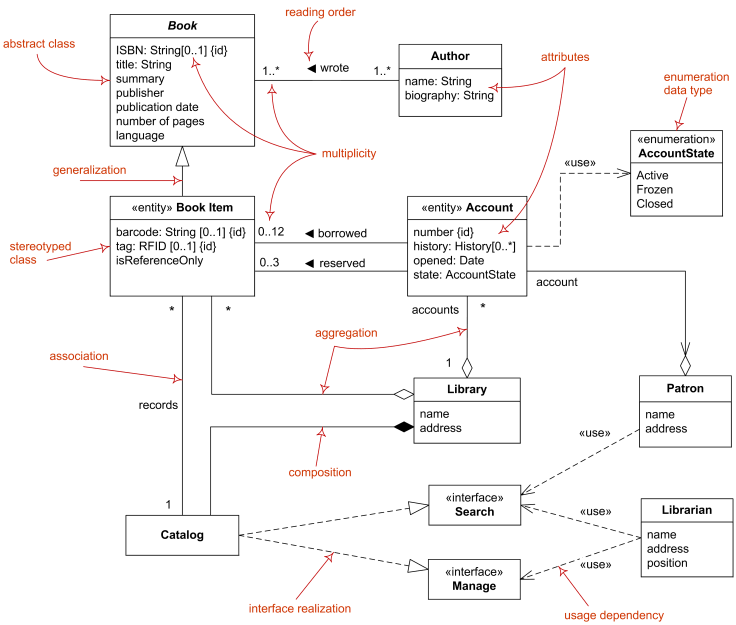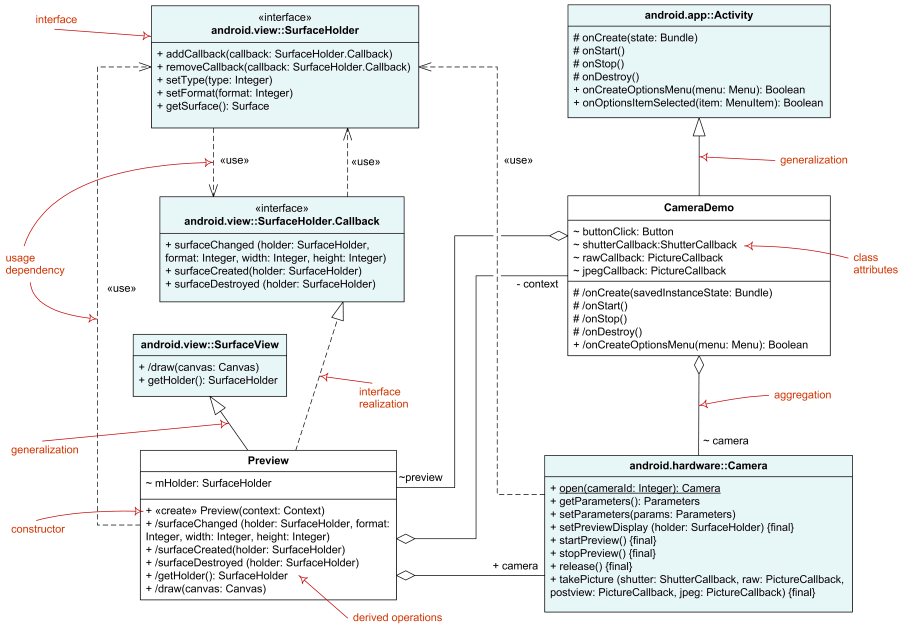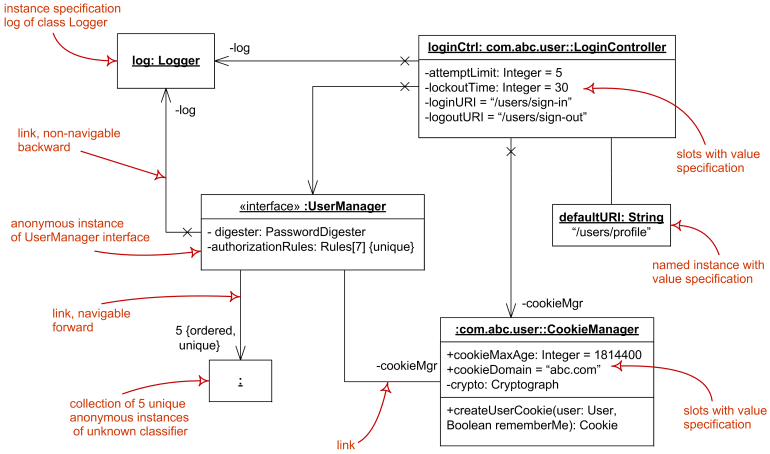UML Class and Object Diagrams Overview
Class diagram is UML structure diagram which shows structure of the designed system at the level of classes and interfaces, shows their features, constraints and relationships - associations, generalizations, dependencies, etc.
Some common types of class diagrams are:
Object diagram could be considered as instance level class diagram which shows instance specifications of classes and interfaces (objects), slots with value specifications, and links (instances of association).
Domain Model Diagram

Domain diagram overview - classes, interfaces, associations, usage, realization, multiplicity.
Diagram of Implementation Classes

Elements of implementation class diagram - classes, interfaces, associations, usage, realization.
Object Diagram
Object diagram was defined in now obsolete UML 1.4.2 Specification as "a graph of instances, including objects and data values. A static object diagram is an instance of a class diagram; it shows a snapshot of the detailed state of a system at a point in time." It also stated that object diagram is "a class diagram with objects and no classes."
UML 2.4 specification simply provides no definition of object diagram except that "the following nodes and edges are typically drawn in an object diagram: Instance Specification and Link (i.e., Association)."
Note, that UML 2.5 standard hierarchy of diagrams (see UML 2.5 diagrams overview), shows class diagrams and object diagrams as completely unrelated. Some other authoritative UML sources state that component diagrams and deployment diagrams containing only instance specifications are also special kinds of object diagrams.
Object diagram overview below shows some major elements of object diagram - named and anonymous instance specifications for objects, slots with value specifications, and links (instances of association).

Object diagram overview - instance specifications, value specifications, slots, and links.